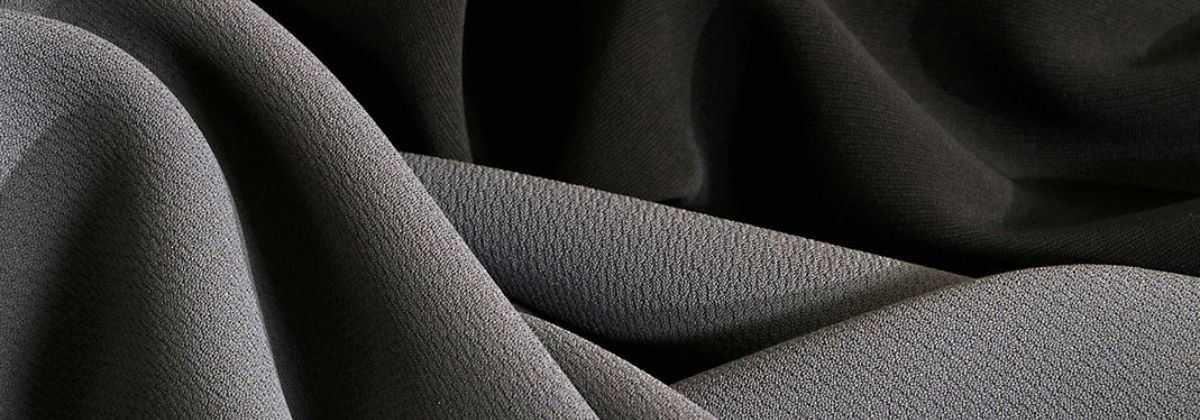19 Aug Wrinkle Resistant Fabrics: Myth or Reality? Exploring Iron-Free Options
In the fast-paced world of today, convenience is key, even when it comes to fashion. Wrinkles in clothing have long been a cause of frustration for many, prompting the rise of wrinkle-resistant fabrics. But are these fabrics truly the game-changer they claim to be, or are they just another marketing gimmick? In this blog post, we will delve into the world of wrinkle-resistant fabrics, examining whether they are a myth or a reality, and explore some iron-free alternatives that offer convenience and style.
The Science Behind Wrinkles
Before we dive into the world of wrinkle-resistant fabrics, let’s understand why wrinkles occur in the first place. Wrinkles primarily form due to the bending and folding of fabric fibres, especially natural fibres like cotton and linen. When pressure is applied, such as when we sit or fold our clothes, the fibres become distorted, leading to the formation of creases.
Wrinkle Resistant Fabrics: Myth or Reality?
Wrinkle-resistant fabrics, often treated with chemical finishes, claim to minimize or eliminate the appearance of wrinkles. These treatments work by altering the fabric’s molecular structure, making it more resistant to creasing. While these fabrics do provide some level of wrinkle resistance, it’s essential to manage expectations. Completely wrinkle-free fabrics, especially in high-stress areas like elbows and knees, are challenging to achieve without some creasing.
Advancements in textile technology have undoubtedly improved the effectiveness of wrinkle-resistant finishes. However, the extent of wrinkle resistance varies based on factors such as the fabric’s composition, the quality of the treatment, and how the garment is cared for. It’s important to note that while wrinkle-resistant fabrics may reduce creasing, they might not eliminate the need for touch-ups.
Exploring Iron-Free Options
If you’re seeking clothing options that offer convenience without solely relying on wrinkle-resistant claims, there are alternative strategies to consider:
- Fabric Blends: Opt for fabric blends that combine natural fibres with synthetic ones. Blends like cotton-polyester or wool-synthetic combinations tend to resist wrinkles better than pure natural fibres.
- Knit Fabrics: Knit fabrics, such as jersey or interlock, inherently have more stretch and give, making them less prone to creasing. They are a great choice for comfortable, casual wear.
- Travel-Friendly Fabrics: Some fabrics are designed with travellers in mind. Look for terms like “travel-friendly” or “packable” when shopping. These fabrics are often lightweight, resistant to wrinkles, and easily foldable.
- Fabric Finishes: Instead of relying solely on pre-treated wrinkle-resistant fabrics, consider using post-laundry fabric sprays or steamers. These can help relax wrinkles and give your clothes a freshly pressed appearance.
- Care Techniques: Proper clothing care can significantly impact wrinkle reduction. Hang your clothes immediately after washing, and fold them neatly to minimize creases. Using padded hangers for delicate items can also help maintain their shape.
Maintaining Wrinkle-Resistant Fabrics: Tips for Prolonged Wear
Now that we’ve explored the nuances of wrinkle-resistant fabrics and their alternatives, let’s dive into some practical tips to help you make the most of your iron-free clothing:
Read Care Labels:
Understanding the care instructions on your clothing labels is crucial. Some wrinkle-resistant fabrics may have specific care requirements to maintain their effectiveness. Follow the recommended washing, drying, and ironing guidelines to ensure your garments stay looking their best.
Gentle Washing:
When washing your wrinkle-resistant clothing, opt for a gentle cycle with cold water. Harsh washing can weaken the fabric’s wrinkle-resistant properties and affect its longevity.
Avoid Overloading:
Overloading the washing machine can lead to excessive agitation, which may cause wrinkles. Give your clothes enough space to move freely during the wash cycle.
Skip the Dryer:
While wrinkle-resistant fabrics are designed to resist creasing, using a dryer on high heat can undo their benefits. Hang-drying your clothes or using a low-heat setting can help preserve their wrinkle-resistant properties.
Fold Neatly:
When storing your iron-free garments, fold them neatly to minimize creasing. Avoid piling clothes on top of each other, as this can lead to pressure-induced wrinkles.
Travel Hacks:
If you’re packing your wrinkle-resistant clothes for a trip, roll them instead of folding them. Rolling reduces the chances of deep creases and makes the most of the fabric’s resistance to wrinkles.
Steam Away Wrinkles:
Invest in a high-quality fabric steamer. Steamers are a quick and effective way to relax wrinkles without the need for iron. They are especially handy for delicate fabrics that might not tolerate direct heat.
Hang Wisely:
Use padded hangers for delicate garments like dresses and blouses. Padded hangers help maintain the garment’s shape and prevent awkward creases.
Spot Treat:
If you notice minor wrinkles on specific areas of a garment, such as a collar or cuffs, consider spot-treating those areas with a fabric steamer or wrinkle-release spray.
Professional Help:
For special occasions or when you need your clothes to look exceptionally crisp, consider taking them to a professional dry cleaner. They have the expertise and equipment to ensure your garments come out looking their best.
The Sustainability Aspect: Wrinkle Free Fabrics and Environmental Impact
In today’s environmentally conscious world, it’s important to consider the sustainability of the fabrics we choose. While wrinkle-resistant fabrics offer convenience, some concerns have been raised about the environmental impact of the chemical finishes used in their production. These finishes often involve various chemicals that can have adverse effects on both the environment and human health.
As an alternative, eco-conscious consumers might opt for organic and sustainable fabric options. Fabrics made from organic cotton, bamboo, hemp, or Tencel (derived from sustainably sourced wood pulp) offer not only wrinkle resistance but also a reduced environmental footprint. These fabrics are often processed using eco-friendly methods and dyes, making them a more sustainable choice for those who want to look good while minimizing their impact on the planet.
Wrinkle-Resistant Innovations: Beyond Clothing
The quest for wrinkle resistance doesn’t stop at clothing alone. The desire for convenience has led to innovations in other areas of everyday life. For example, wrinkle-resistant bedding and linens have gained popularity, offering a smooth and polished look to bedrooms without the need for constant ironing. Wrinkle-resistant tablecloths and napkins have also found their way into homes, making hosting dinners and gatherings a breeze.
Moreover, advancements in technology have extended wrinkle resistance to upholstery fabrics, making furniture maintenance easier and more convenient. Imagine having wrinkle-resistant curtains, couches, and decorative textiles that maintain their fresh appearance even in high-traffic areas.
Fashion Versatility: Dressing for Success
While wrinkle-resistant fabrics are often associated with casual wear, the fashion industry has evolved to offer a wide range of options that cater to various styles and occasions. Modern workwear, for instance, now includes wrinkle-resistant dress shirts and trousers, allowing professionals to look sharp and put-together throughout the day. These garments are designed to resist wrinkles even during long hours of wear, reducing the need for midday touch-ups.
For travellers and adventurers, wrinkle-resistant activewear has also become a sought-after choice. From moisture-wicking athletic tops to lightweight hiking pants, these fabrics combine comfort, performance, and style while keeping wrinkles at bay.
Embracing Individuality: Mixing and Matching Fabrics
A fashion-forward approach to incorporating wrinkle-resistant fabrics into your wardrobe involves mixing and matching with other materials. Pairing a wrinkle-resistant blouse with a textured skirt or layering a structured blazer over a knit dress can create visually appealing contrasts that enhance your overall look.
Consider experimenting with different fabric combinations to strike a balance between wrinkle resistance and aesthetic appeal. By blending the convenience of iron-free fabrics with the charm of traditional textiles, you can curate outfits that reflect your style and adapt seamlessly to your daily activities.
The last word
In the ongoing quest for convenient and polished fashion choices, wrinkle-resistant fabrics offer a viable solution. While they may not eliminate wrinkles, they certainly provide a level of convenience that aligns with today’s fast-paced lifestyles.
By understanding the science behind wrinkles, exploring different fabric options, and adopting proper care techniques, you can ensure that your iron-free clothing remains looking fresh and well-maintained. Whether you choose wrinkle-resistant fabrics or opt for other strategies to reduce creasing, the key is to strike a balance between style, comfort, and practicality.
Remember that fashion is a personal expression, and the choices you make should cater to your individual needs and preferences. With the right combination of fabric selection, care methods, and a touch of creativity, you can confidently step out in clothes that exude effortless elegance, whether they’re made from wrinkle-resistant materials or other iron-free alternatives.




Sorry, the comment form is closed at this time.